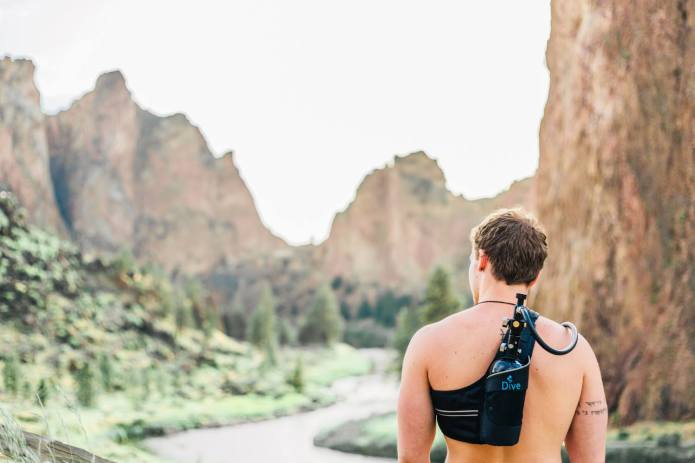
Dive Portable Lungs
Experience the freedom of diving in a whole new way!
Compact, portable & lightweight
Breathe underwater for up to 15 minutes
Refillable by hand pump
How to use
Using the Dive Portable Lungs clip is extremely easy:
- Simple pump up the tank.
- Put on the dive bag.
- Dive up to 15 minutes!






Description
The Dive Portable Lungs Kit is an easy to use, light to carry kit that can be refilled anywhere.
This kit includes:
- Dive Portable Lungs Tank
- Cross Body Bag
- 4-Stage Regulator
- 4-Stage High Pressure Hand Pump
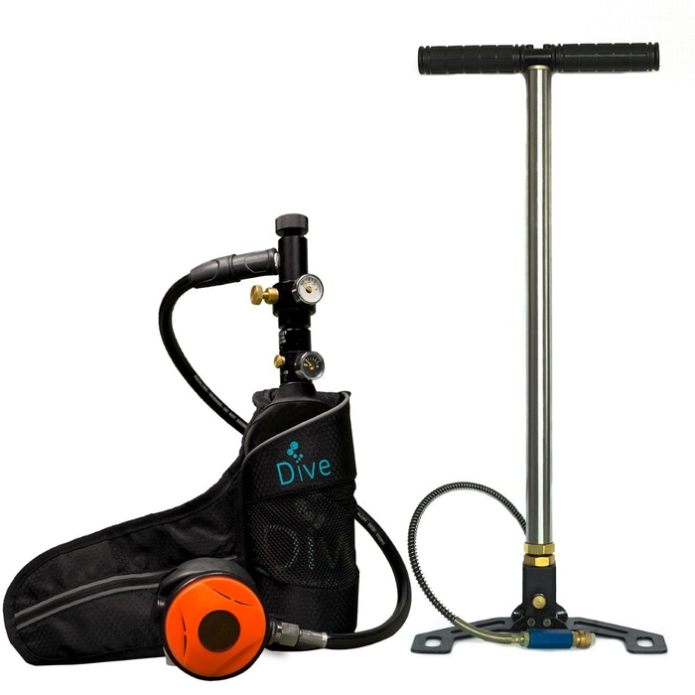
The Dive Portable Lungs Tank is built to the same standards as a normal SCUBA cylinder, and comes with the 4-Stage Regulator already attached. The 4-Stage High Pressure Hand Pump attaches directly to the tank and pumps at up to 3,000psi. The Hand Pump filter keeps out all dust, oil and moisture for safety.
The special collapsible 4-Stage High Pressure Hand Pump is very simple to use (works just like a bicycle pump) and allows you to fill up the entire tank anywhere you are. A carrying case for the Hand Pump is included in order to make the experience even more streamlined.
Once your tank is filled up just twist the copper regulator to 140psi, then you are ready to go.
Simply breathe and on-demand airflow is released from the regulator, allowing you to dive hands free for up to 15 minutes. The Dive Portable Lungs Kit comes with a pressure gauge which allows you to easily check how much air is left within the tank at any time.
Each Dive Portable Lungs Kit comes with a sleek, fast drying, easily adjustable cross body bag which clips on and off in seconds. Additionally the cross body bag also has a built-in zipper punch so that you can carry anything that you might find underwater.
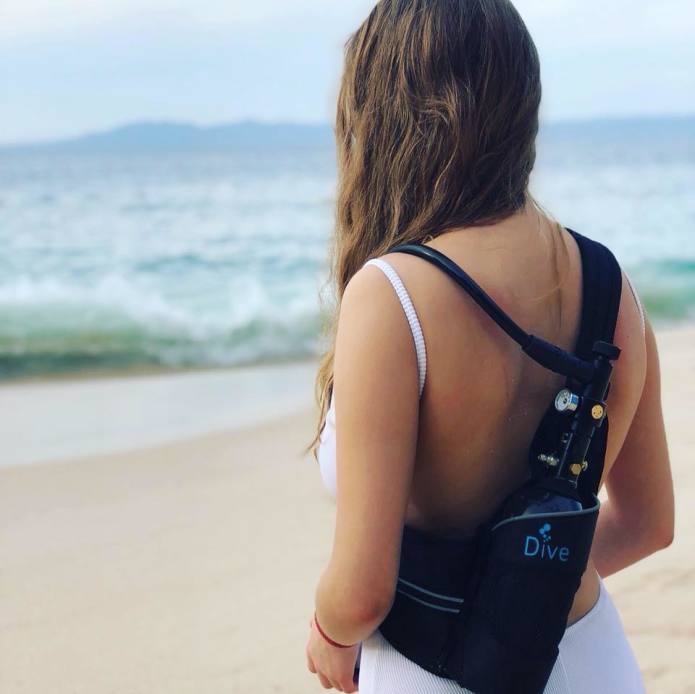

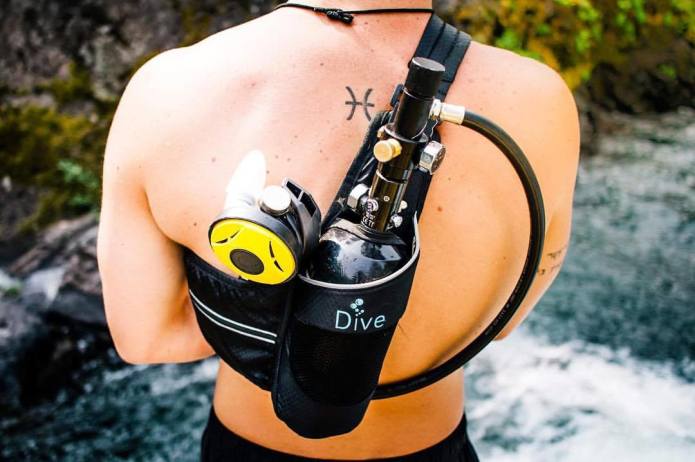
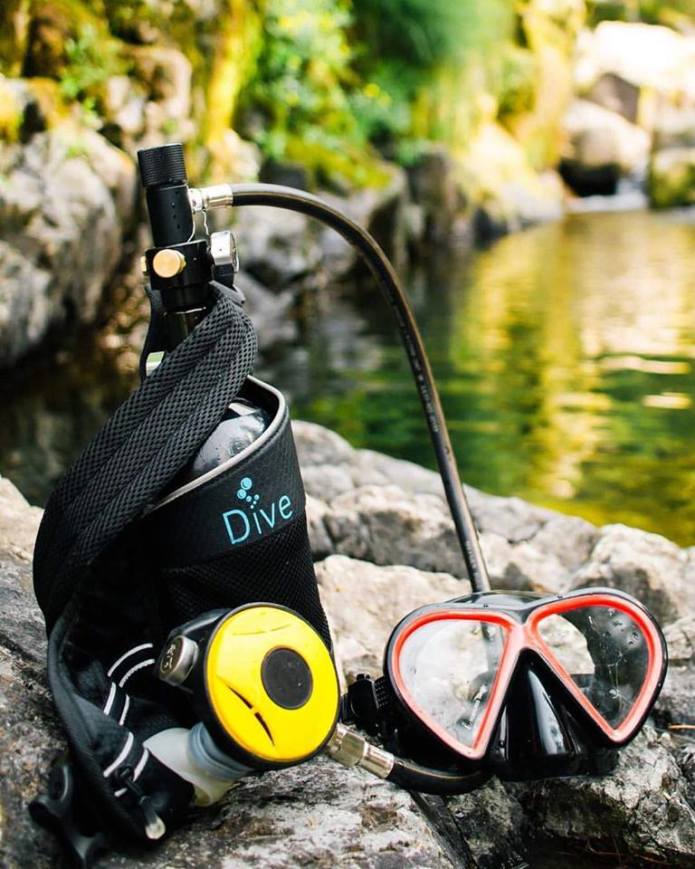
Tips & Tricks





How it works
The Dive Portable Lungs Kit comes with a 4-stage hand pump that can pump to 3,000psi+, which fills up the included tank with enough air to last you up to 15 minutes underwater. These extreme pressures are achieved through an intricate system:
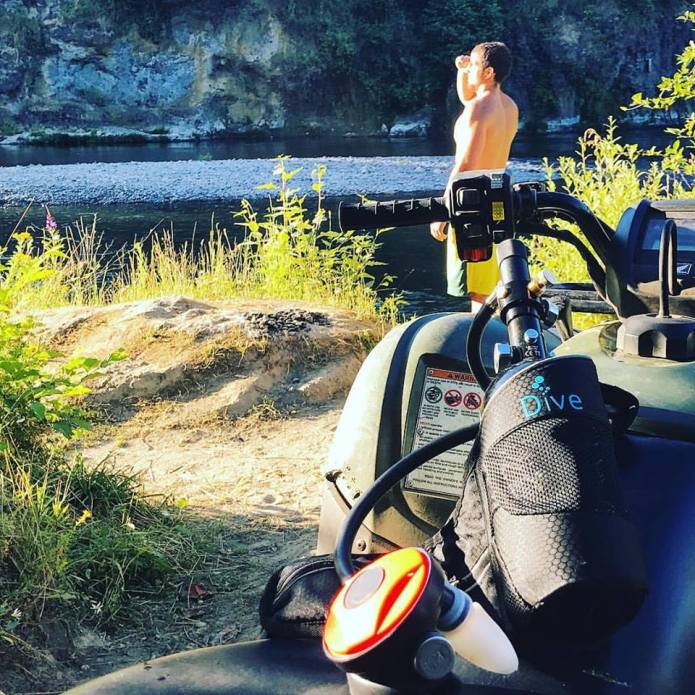
FAQ
Q: Do I need a diving certification in order to use the Dive Portable Lungs Kit?
A: No, you do not need a diving certification in order to use it. However users must be comfortable in the environment in which they use the kit, as well as be comfortable with snorkelling. The package contains all elements needed to dive safely at a shallow depth (limit your maximum dive depth to 9 meters / 30 feet). For those that would like to use the kit but don’t feel at ease with this environment we recommend to take diving classes.
Q: Is the Dive Portable Lungs Kit safe to travel with?
A: Yes, just make sure that the tank has no pressure in it when checking in to a flight.
Q: What materials is the Dive Portable Lungs Kit made of?
A: The tank is constructed out of steal aluminium to ensure easier travel, whilst all other parts are steel and copper.
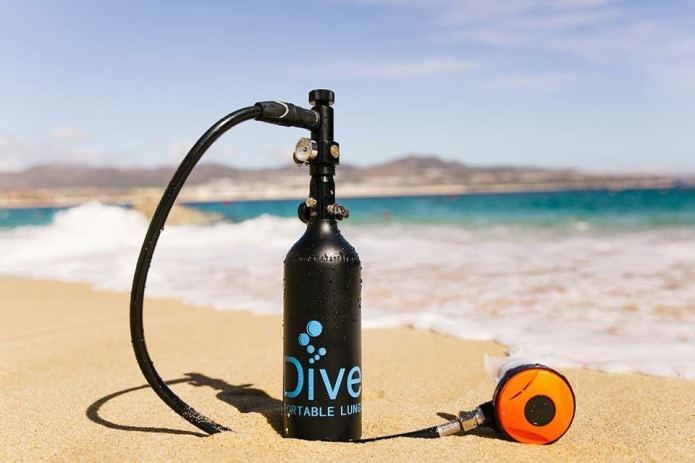
Safety Tips
Read the included safety instruction manual before diving.
Maintain good mental and physical fitness for diving. Avoid being under the influence of alcohol or dangerous drugs when diving.
Avoid overexertion while in and underwater. Limit your maximum dive depth to 9 meters / 30 feet.
Breathe properly while diving - never hold in the air you breathe. Diving compressed air can be very dangerous and always a good idea to be certified for your own safety.
Never ascend to the surface without releasing air from your lungs to avoid Over Lung Expansion.
Pulmonary barotrauma: During rapid ascent the air in the lungs expand, causing lung over expansion and rupture releasing bubbles into the bloodstream.
If you are not a certified diver: practice in a pool until you get comfortable with breathing underwater "it is a mental training" to avoid underwater panic.
Never dive alone: safety procedures that are intended to improve divers' chances of avoiding or surviving accidents in or under water by diving in a group of two
Water pressure compresses air: air in a diver's body air spaces and dive gear will compress as pressure increases (and expand as pressure decreases).
Equalization as a diver descends, the pressure increase causes the air in their body's air spaces to compress. The air spaces in their ears, mask, and lungs become like vacuums as the compressing air creates a negative pressure. Delicate membranes, like the ear drum, can get sucked into theses air spaces, causing pain and injury. This is one of the reasons that a diver must equalize their ears for scuba diving. On ascent, the reverse happens.
Decreasing pressure causes the air in a diver's air spaces to expand. The air spaces in their ears and lungs experience a positive pressure as they become overfull of air, leading to a pulmonary barotrauma or a reverse block. In a worst case scenario this could burst a diver's lungs or eardrums. To avoid a pressure-related injury (such as an ear barotrauma) a diver must equalize the pressure in their body's air spaces with the pressure around them.
To equalize their air spaces on descent a diver adds air to their body airspaces to counteract the "vacuum" effect by breathing normally, this adds air to their lungs every time they inhale adding air to their mask by breathing out their nose adding air to their ears and sinuses by using one of several ear equalization techniques. To equalize their air spaces on ascent a diver releases air from their body air spaces so that they do not become overfull by breathing normally, this releases extra air from their lungs every time they exhale ascending slowly and allowing the extra air in their ears, sinuses and mask to bubble out on its own.
When purchasing the Dive Portable Lungs Kit you understand that you are using it at your own risk. To fully understand the risks and challenges of diving read the included safety instruction manual before diving.
